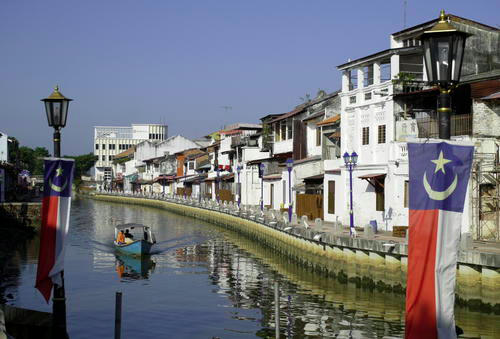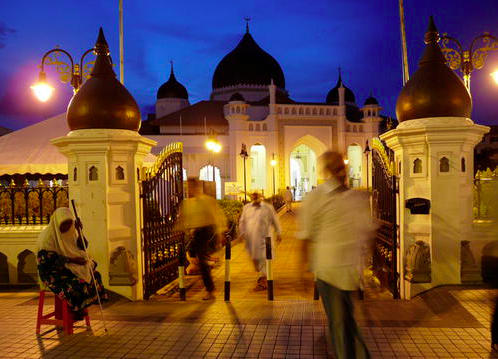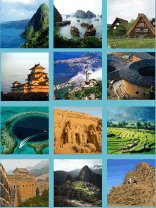Guide 3 – Case Study: Melaka and George Town, Historic Cities of the Straits of Malacca (Malaysia)
Baseline situation
George Town and Melaka were jointly inscribed on the World Heritage List in 2008 due to their shared rich multi-cultural trading heritage. However, they have also been subject to criticism and a feeling of ‘disconnect’ between residents and their heritage, which is associated with foreign cultures and colonialism. Tourism in Malaysia was on the rise even prior to the inscription of these sites. From 2000-2010 the number of tourist arrivals increased from 10.2 million to 24.6 million. In 2009, 5.96 million visitors visited Penang (the capital of which is George Town), while Melaka (capital of the state of Malacca) welcomed nearly 3.76 million. As a result, tensions were arising between tourism and infrastructure development, and the requirements of a World Heritage site and safeguarding the Outstanding Universal Value (OUV).
What did they do?
The tourism strategy in both locations is run by a consortium of stakeholders from a range of heritage associated fields and government workers. This promotes a participatory approach that takes into consideration the view of communities and stakeholders. In order to revitalize the areas, traditional ‘shophouses’ have been subject to adaptive reuse – such as bars and restaurants – while some are available for homestays.
Strategic priorities
- Make the heritage is relevant and meaningful to contemporary inhabitants.
- Safeguard the traditional features of George Town and Melaka that were responsible for securing World Heritage status and recognized as having OUV (e.g. the ‘shophouses’ – defined as a ‘unique structure that clearly shows the influence of Chinese, Malay, Indian, and European styles, merged and matured in response to the local environment’[1]).
- Ensure the economic viability of the shophouses, while maintaining their traditional facades.
-
Establish a system of governance that facilitates the priorities outlined above.
What worked?
In keeping with the recognition of its OUV, the ‘heritage offer’ of George Town and Melaka was re-defined as ‘cultural tourism’, focusing on the heritage city rather than the beach tourism that Malaysia is known for. A not-for-profit organization, ‘George Town World Heritage Incorporated’ (GTWHI), was established to manage, monitor and promote the World Heritage features of the city in collaboration with a range of stakeholders, including conservation specialists, state and city authorities, and historians and art practitioners. As part of this, a programme of educational and cultural activities was created. Furthermore, GTWHI provides advice to property owners, architects, and builders; conducts skills development workshops; and engages school children, students, and the public through talks and activities.
In George Town, adaptive reuse of heritage building is encouraged to generate new life to buildings, in keeping with the ‘Living Heritage City’ concept. Many of the traditional businesses no longer exist (e.g. cobblers), but the shophouses now contain bars, restaurants, and shops where local residents can directly benefit from economical input of foreign visitors. Research has helped to establish the positive examples of adaptive re-use – those that increase the stability and longevity of buildings – as well as those that are detrimental to conservation. This is then fed back into the conservation policy.
Melaka’s management plan also recognizes the need to form a common vision with a partnership of the cultural heritage management system and cultural tourism. In order to preserve heritage resources and highlight local uniqueness, monuments and buildings such as mosques, temples, and hotels are used as interpretation centres. There are also strict guidelines regarding new buildings, and they cannot be built in a way that might detract from the OUV of the site.
In 2012 Melaka hosted a conference that linked tourism, heritage, and culture. It gave an opportunity for international educators, industry professionals, policy makers, and graduate students to discuss models of best practice for the utilization of World Heritage sites for tourism purposes.
What was tough?
There was significant distrust in the state governments of Penang and Malacca, who were believed to value the large-scale development over the safeguarding of the traditional townscape of the newly designated WHS (e.g. as soon as World Heritage status was granted to George Town its OUV was immediately threatened by a prospective hotel development).
Additional difficultly stemmed from the fact that the heritage inscribed on the World Heritage List in George Town and Melaka was perceived as ‘un-Malaysian’, embodying colonial values that were then perpetuated by the influx of modern, ‘western’, styled bars and restaurants that were taking the place of traditional family businesses run through the historic shophouses.
How did they get buy-in?
The management strategy of both George Town and Melaka included efforts to collaborate with residents and create a common vision that incorporated as many views and concerns as possible. The financial benefits resulting from the reuse of traditional buildings helped to engage the local communities, while the tourist tax has contributed to conserving and revitalising the built environment. All this demonstrates the advantages of the new management strategies that have followed World Heritage inscription.
What are the results?
The influx of inhabitants to the revitalized Old Quarters of George Town and Melaka have been encouraged to participate in decision-making processes through residents’ committees. Part of the income generated from tourism revenues is allocated to conservation purposes – research has proven that 85% of tourists readily agree to contribute to any form of special tax if the money is used to enhance conservation efforts around the World Heritage site.
The success of the collaborative stakeholder-and-governance schemes can be further measured through tourist satisfaction and perceptions of ‘liveability’ (the latter being particularly significant, as one of the management plan’s key goals is to balance the needs of the local population with the OUV that is displayed to visitors). ‘Liveability’ is a difficult thing to measure, but attempts have been made to assess these factors through a residents’ survey in George Town, finding that liveability had improved thanks primarily to improved social cohesion and economic conditions from the tourist trade. Meanwhile, recent surveys (c.2012-13) in Melaka have shown that the presentation of heritage elements of the town exceed tourist expectations, demonstrating that the current governance system has been successful in conserving the historic structures and features that contribute toward this town’s OUV.[2]

What lessons can others take from this?
The key lesson from the examples of George Town and Melaka is to create a diverse body of stakeholders who are given a platform – whether this is through the creation of a specific organization responsible for the management of the heritage, or the integration of stakeholder consultation as standard into the management plan. This allows people to share their vision of the World Heritage site and identify what opportunities they want to exploit, as well as share their own experiences of how management decisions are affecting people in the longer term.
These sites also demonstrate the importance of OUV as a tourist attraction, and how to use the OUV as a marketing tool to attract a particular type of visitor who will value the characteristics a WH site was inscribed for; rather than just consider it another tourist destination. Visitor and residents’ attitudes can, and should, be monitored on an ongoing basis. The responses can then be used to shape policy and ensure that the governance methods are fit for purpose. In George Town and Melaka, surveys have been carried out by external agencies and individuals, and they demonstrate the broader collaborations and resources site managers can use when assessing the impacts of their governance and policy.
For more information about George Town and Melaka, their management plan, and what they do, visit their resource page on the official website.


